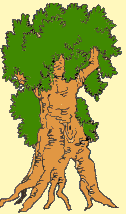Parkinsonia aculeata
Parkinsonia aculeata
Parkinsonia aculeata
Parkinsonia aculeata
Caesalpiniaceae
French: Genêt épineux. Wolof: Parkinsono, sanet
Native to Mexico introduced in arid zones, where it has naturalized in humid and marshy places, Parkinsonia is a shrub with small tree 3 to 8m high, with short bole often branchy near the base, with drooping branches. With a characteristic habit due to its light foliage. The bark is smooth to grainy, green with a thin slice more or less brownish above and yellowish below. The twigs are hairless green. The leaves are alternate, bipinnate in fascicles of 2 or 4 dark green leaves. The primary spine, 3 to 4 mm long, is made up of 1 to 2 pairs of linear, flat pinnae 15 to 45 cm long and 2 to 3 mm wide. Its edge is filled with numerous opposite, elliptical subsessile leaflets, with a rounded wedge top, and a wedge base. Leaflets at the base are larger than those at the top. The fruit is a linear papery pod, glabrous, long acuminate at the tip, beige and veined when ripe, containing 1 to 5 black elliptical seeds.
Flowering takes place at the end of the dry season and at the beginning of the rainy season and is found in the Sahel, from Mauritania to Sudan. It is a plant that is planted in villages and on the edges of fields.
Medicinal Use The leafy twigs are diuretic and are used to treat uremia. Its bark is widely used to treat fevers. The leaves are diaphoretic and are considered abortive. They are also used for nausea with fever. The combination of leaves, flowers, and seeds is used as an antiseptic to treat tuberculosis and fevers. The leaves are used as a condiment. Young flowers and leaves are eaten by children.
Add a comment























